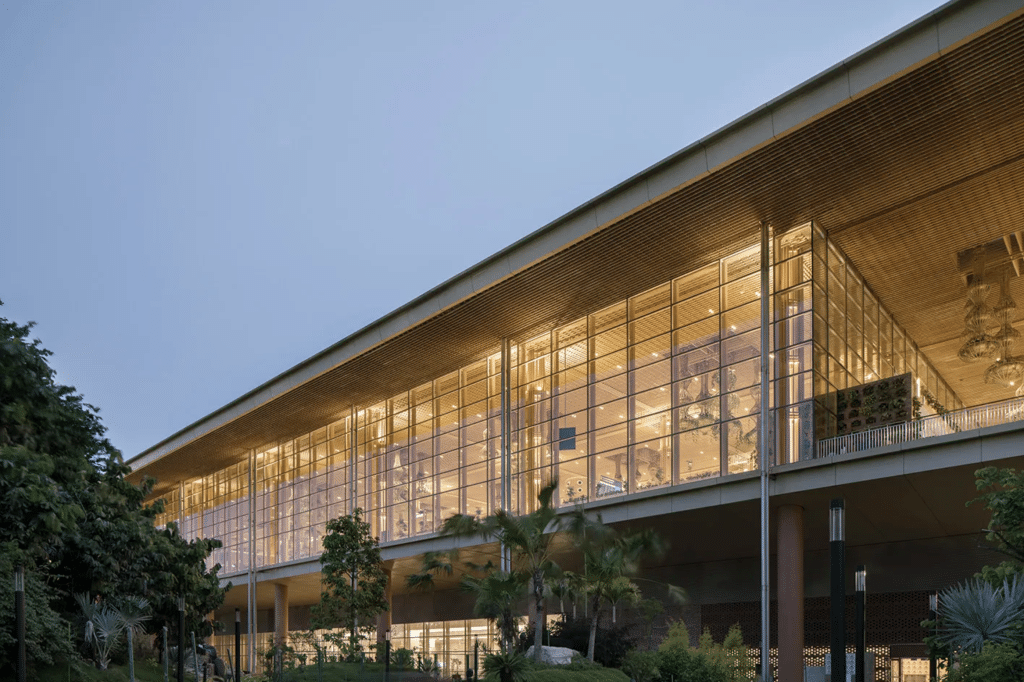Architectural design is an artistic discipline that marries science and creativity to devise stunning, functional, and sustainable infrastructures. From the towering skyscrapers adorning cityscapes to quaint cottages nestled in the countryside, architectural design is interlaced into every aspect of our daily lives. It is the blueprint for the built environments we live in, work in, and explore- a testament to human ingenuity and its progressive sensibilities.
An imperative aspect in architectural design is its structure. The structure is not only the skeleton that holds a building together but also considerably influences its aesthetics and functionality. An architect’s choice of structure can radically alter a building’s look, the kind of spaces it can accomodate and its overall longevity. Well-thought-out structural designs contribute significantly to the sustainability of a building, deeply cutting down on resources employed during the construction stage and the building’s lifetime. This article examines the varied categories of structures in architectural design: load-bearing, post-and-lintel, shell, frame, and suspension and cable-stayed structures. Through this exploration, we can gain an appreciation for the diversity and innovation inherent in architectural structural design.
Load-Bearing Structures
Load-bearing structures are fundamental to architectural design and form the backbone of many buildings. They function using walls, columns, or arches to bear and evenly dissipate the weight from the roof down to the foundation. The design and integral strength of these load-bearing elements determine how many floors a building can sustain. Every brick, stone, or piece of wood in a load-bearing structure is strategically placed in an interlocked formation, establishing a balance within the structure. An architect must meticulously plan out these structures, taking into consideration factors such as the material’s strength, environmental conditions, and the structure’s functional purpose.
In residential housing, the interior and exterior walls often function as the load-bearing structures, supporting the weight of the roof. Every opening for doors and windows requires careful design in order not to compromise the strength of these walls. In the global purview of architectural designs, load-bearing structures prove themselves as a timeless and adaptable category, echoing the versatility and innovativeness of architects.
Post-and-Lintel Structures
A post-and-lintel structure is one of the most fundamental and oldest types of construction techniques utilized in architectural design. This structure, typically composed of two upright posts supporting a horizontal lintel, efficiently carries a load downwards to its foundation due to its exceptional simplicity and practicality. The precise positioning of the posts gives it the ability to bear significant loads, and the lintel spans the gap between these posts, thereby creating an open space beneath.
The post-and-lintel structures offer architects flexibility to create open spaces, which allow for light penetration and unobstructed views in a design. They constitute a primary framework for supporting buildings while maintaining the balance between aesthetic interest and structural stability.
Shell Structures
Shell structures form an important category in architectural design that emphasize strength through form rather than mass. These are thin, curved surfaces that can bear loads primarily through their form and their ability to work as one unit. Because they are curved and encompass three-dimensional space, they can cover large areas with minimal use of materials, making them a highly efficient and aesthetically pleasing structure.
Amidst the benefits of using shell structures in architectural design, their characteristics of material efficiency and inherent stability stand out. Because of their nature, they enable architects to design spacious interior environments that are unobstructed by bulky support structures. They have the potential to be exceptionally sustainable, due to their ability to cover large spaces while using less material.
Frame Structures
Frame structures, also known as framed buildings, are constructions where a skeleton comprised of vertical columns and horizontal beams supports the building’s weight. This structure allows for the walls’ primary function to be separation of spaces rather than bearing loads. This unique feature of frame structures provides both flexibility for the building design and also allows for high-rise constructions.
The beauty and effectiveness of frame structures are demonstrated in various architectural landmarks across the globe. It is worth noting that a majority of modern high-rises today employ steel and/or concrete frame structures. Frame structures’ ability to provide open floor plans and withstand heavy vertical loads without the need for bulky load-bearing walls make them indispensable in modern architectural design, especially in urban settings that demand efficient use of space and structural flexibility.
Suspension and Cable-Stayed Structures
Suspension structures are designs where the deck, or main span, is hung below suspension cables, which, in turn, are anchored to towers and secured by anchorages at both ends. In cable-stayed structures, the deck is supported directly by cables connected to a single tower. The primary tensional forces of both structures are effectively transferred to the towers, which manage these loads to the ground.
A thoughtfully designed suspension or cable-stayed structure can make an impactful architectural statement, merging functionality with striking aesthetics. One of the major advantages of using these structures in architectural design is their ability to span large distances without intermediate supports, making them ideal for bridging gaps over bodies of water or roadways. Their bold visual appeal and structural efficiency make them a prime choice for architects seeking to create eye-catching infrastructure designs.
Understanding the categories of structures in architectural design – load-bearing, post-and-lintel, shell, frame, and suspension and cable-stayed structures – is an important introductory framework for architects aiming to create buildings that balance aesthetic values, functionality, and longevity. These structures represent architectural choices that have profound implications on the character and potential of our built environment. As the field of architecture continues to advance, these structures will inevitably adapt and innovate, shaping the future of our architectural view with remarkable diversity and exciting possibilities.
